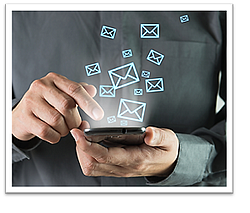 One of the clearest ways to determine if an email is the best way to communicate with the recipient is to ask yourself if it focuses on who, what, when, or where. If, however, your email delves into why or opinion, you may want to think twice about sending it. The recipient only has your words on the page to decipher your meaning, intent, and tone. Without visual clues or the sound of your voice your message can easily be misunderstood.
One of the clearest ways to determine if an email is the best way to communicate with the recipient is to ask yourself if it focuses on who, what, when, or where. If, however, your email delves into why or opinion, you may want to think twice about sending it. The recipient only has your words on the page to decipher your meaning, intent, and tone. Without visual clues or the sound of your voice your message can easily be misunderstood.
- Peter Post, Emily Post's The Etiquette Advantage in Business
Almost no matter what industry you're in, email certainly has a place in your business. Because of its ubiquity, it's even more important that we consider when email is the best method of communication and when it is not. As the Posts (Peter, along with Anna, Lizzie, and Daniel Post Senning) remind us in their book, Emily Post's The Etiquette Advantage in Business, it's easy for an email to be misunderstood, so the simple acid test to determine whether a message is better delivered through more direct means is to keep email for factual details and phone/in-person conversations for the more intricate exchanges.
With that said, if your business is largely virtual, it won't be reasonable (or even possible) to divide your communications in this way. Instead, the tip is a good reminder that we need to show extra care when sending an email that is expressing reasoning or opinions. In such a situation, try to use very clear and direct language, and proof read it with "fresh" eyes by coming back to it after completing another task.
Looking for training on email communication? ProSolutions can help. See all of our most popular services:


